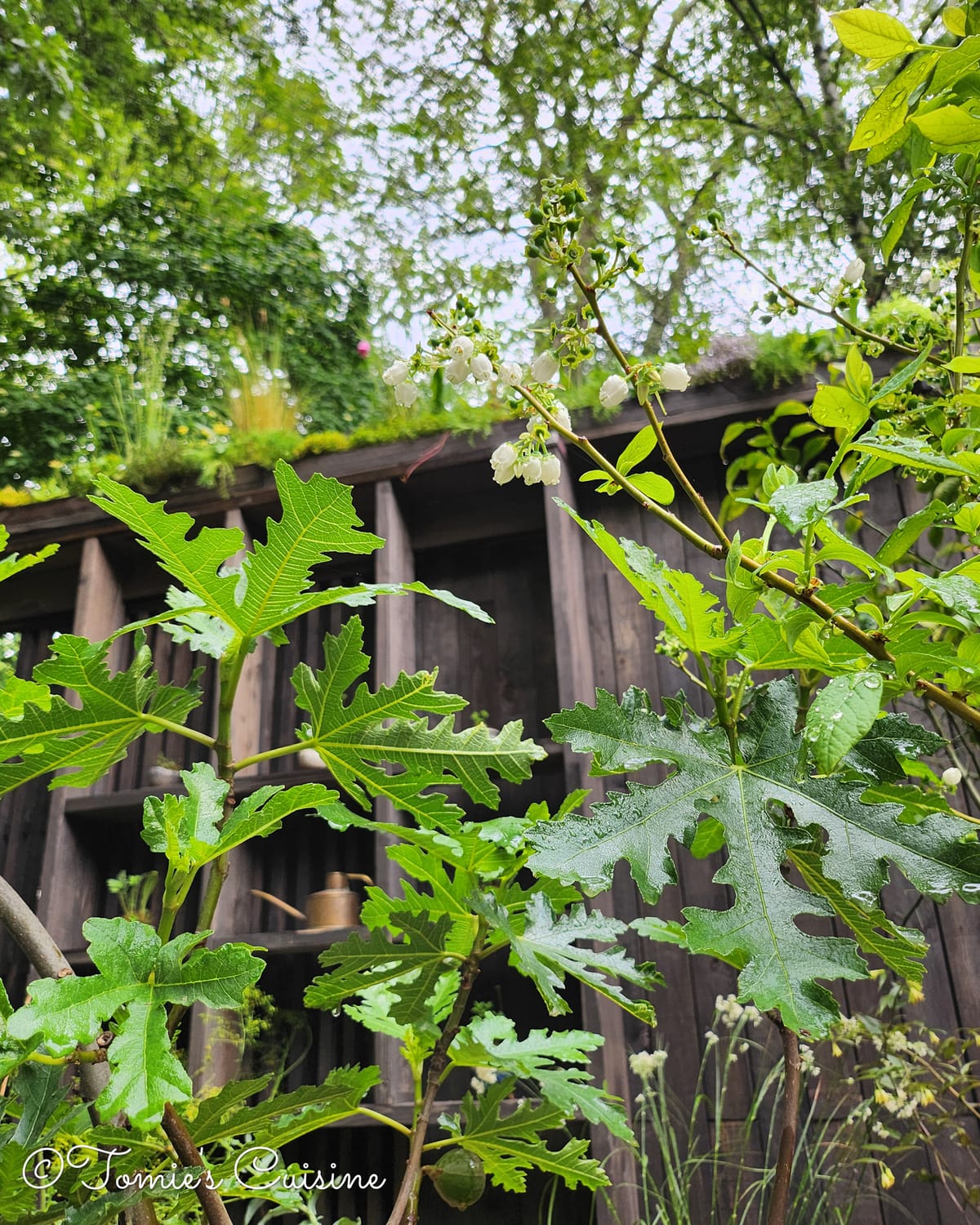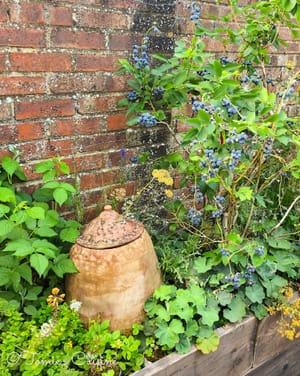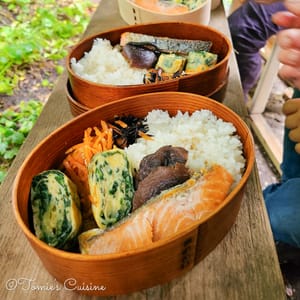In “Tomie’s Cuisine the Nobonsai” garden at the RHS Chelsea Flower Show 2024, there are many plants we can use for cooking. Let’s give you some cooking ideas for those plants.
Trees
Yuzu
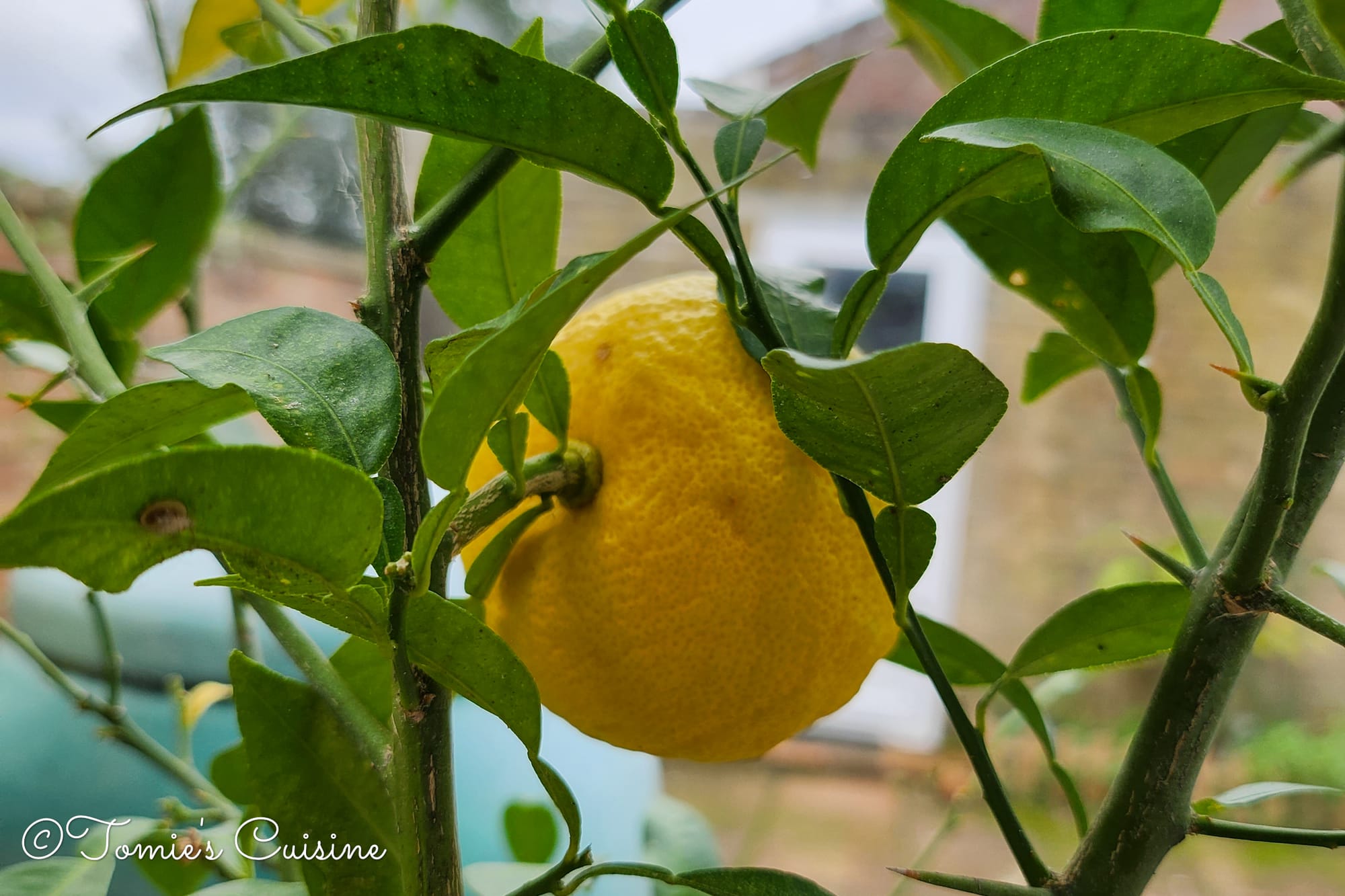
Yuzu is a lemon-like citrus fruit from East Asia.
I made Yuzu honey syrup last winter when I harvested my first yuzu fruit. Slice it, put it in a glass jar and fill it with honey. It’s great to mix with hot water to make a hot “yuzunade” or mix with some cold sparkling water. I added a teaspoon or two of cider vinegar to make it even more refreshing.
Just be careful with the thorns on the tree when caring for them.
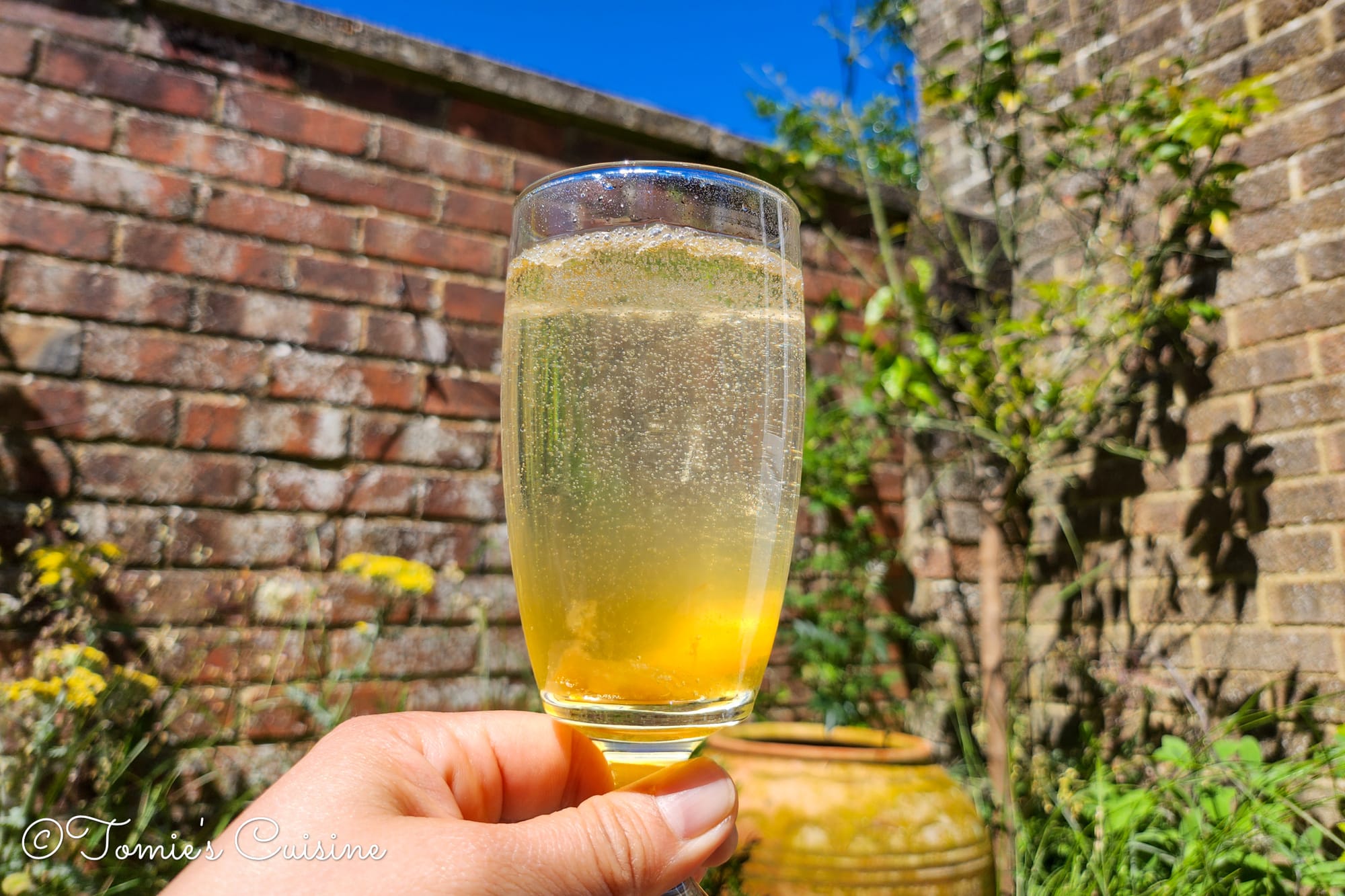
Fig
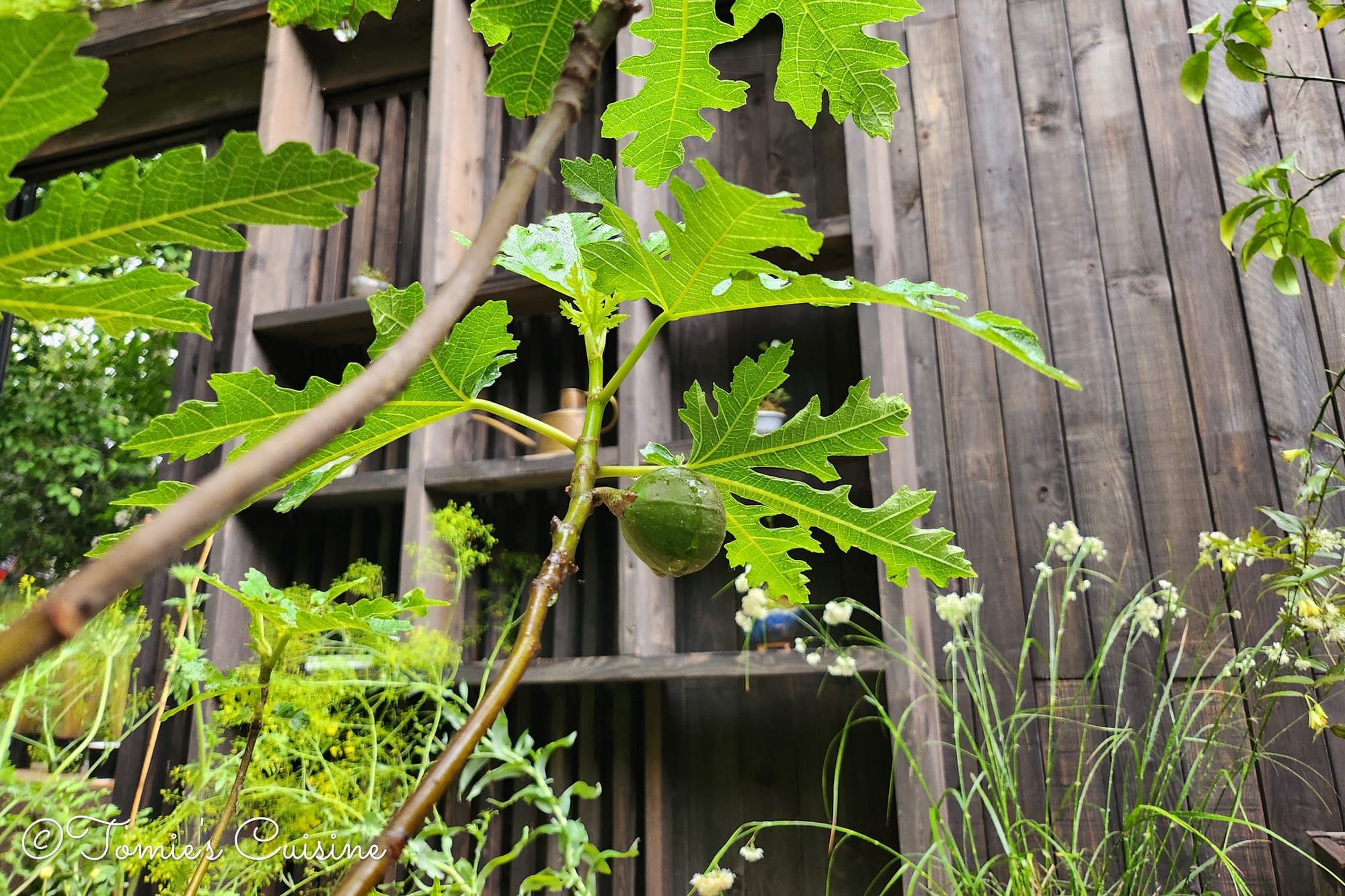
We love having fig as it is, but it's also great as chutney for cheese and biscuits. Or you can add it to a salad with some walnuts.
The tree's shape is beautiful, so we planted it right in front of the garage wall to let it climb against it.
Hazelnuts
The first thing we want to do when we pick some hazelnuts is to roast them to make homemade chocolate spread (i.e. Nutella)! Which will pair nicely with some homemade crêpes. You can also blitz the hazelnuts into powder and use them t as grounded hazelnuts to make cakes like financier or frangipane tart!
Blueberry
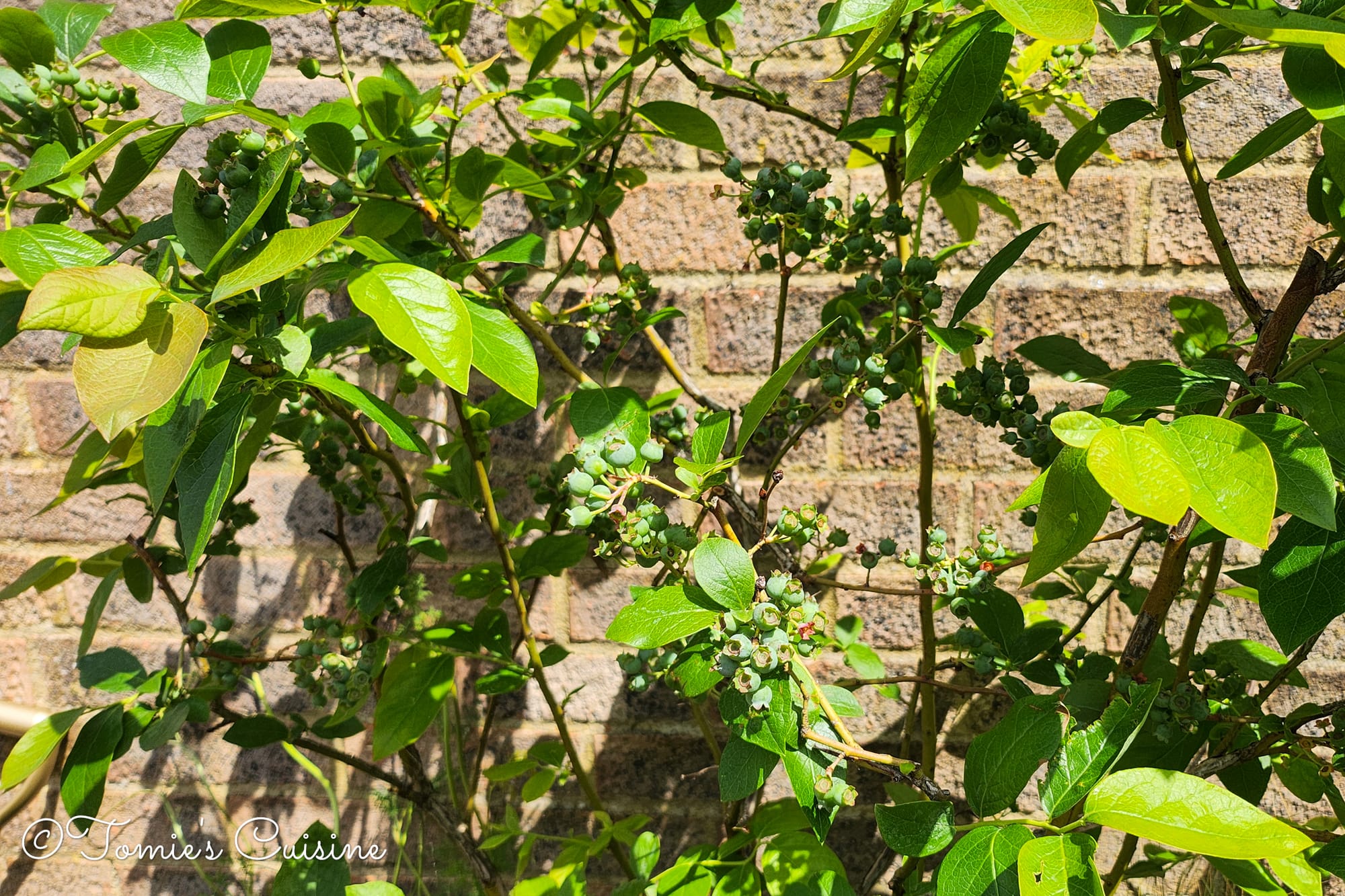
As far as I can remember, I always had blueberry trees in my mum's garden. During summer, I picked the blueberries up and popped them into my mouth.
If you can harvest enough, it is excellent as a jam or cake. Of course, you can use them fresh to put into your breakfast smoothie, yoghurt, or movie snack. Another tip: if you infuse them with some cider vinegar and sweetener, you’ll have a refreshing drink with soda water during summer.
Japanese pepper
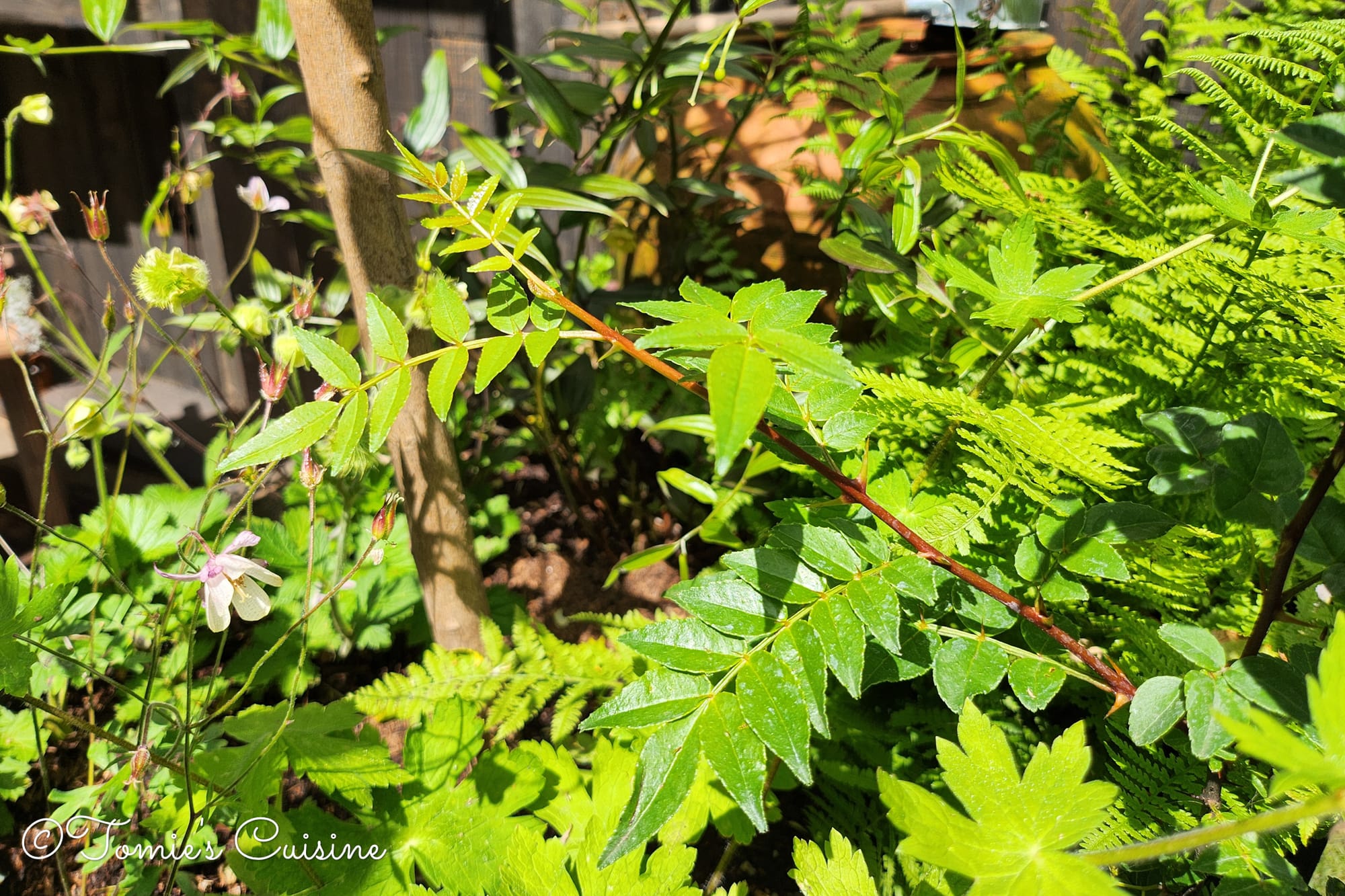
Have you ever heard of this pepper or tasted it? It has a distinguished flavour and is often used as a spice to sprinkle on grilled eel. The leaf is often used as a decoration to give a refreshing scent to the dish.
Herbs
Thyme
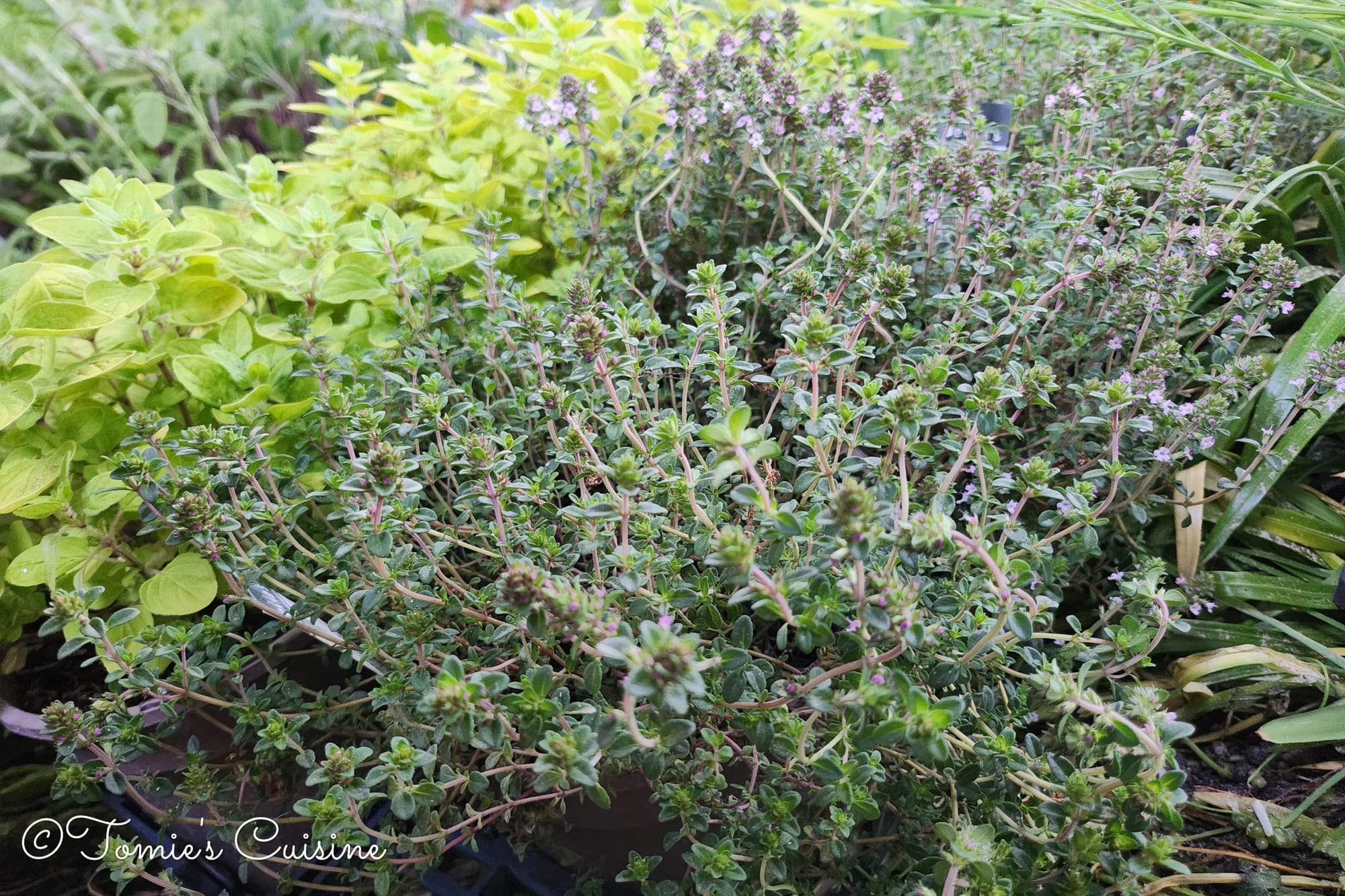
The most used herb in our house. I used it to cook some puy lentils and as a garnish for pan-fried duck leg. The soft cooked lentils with onion, carrot, lardon, and mushrooms and a small bunch of fresh thyme and bay leaf from our garden went well together.
Thyme is also great for baking cakes like lemon and thyme cake or cheese and thyme biscuits.
Garlic chive
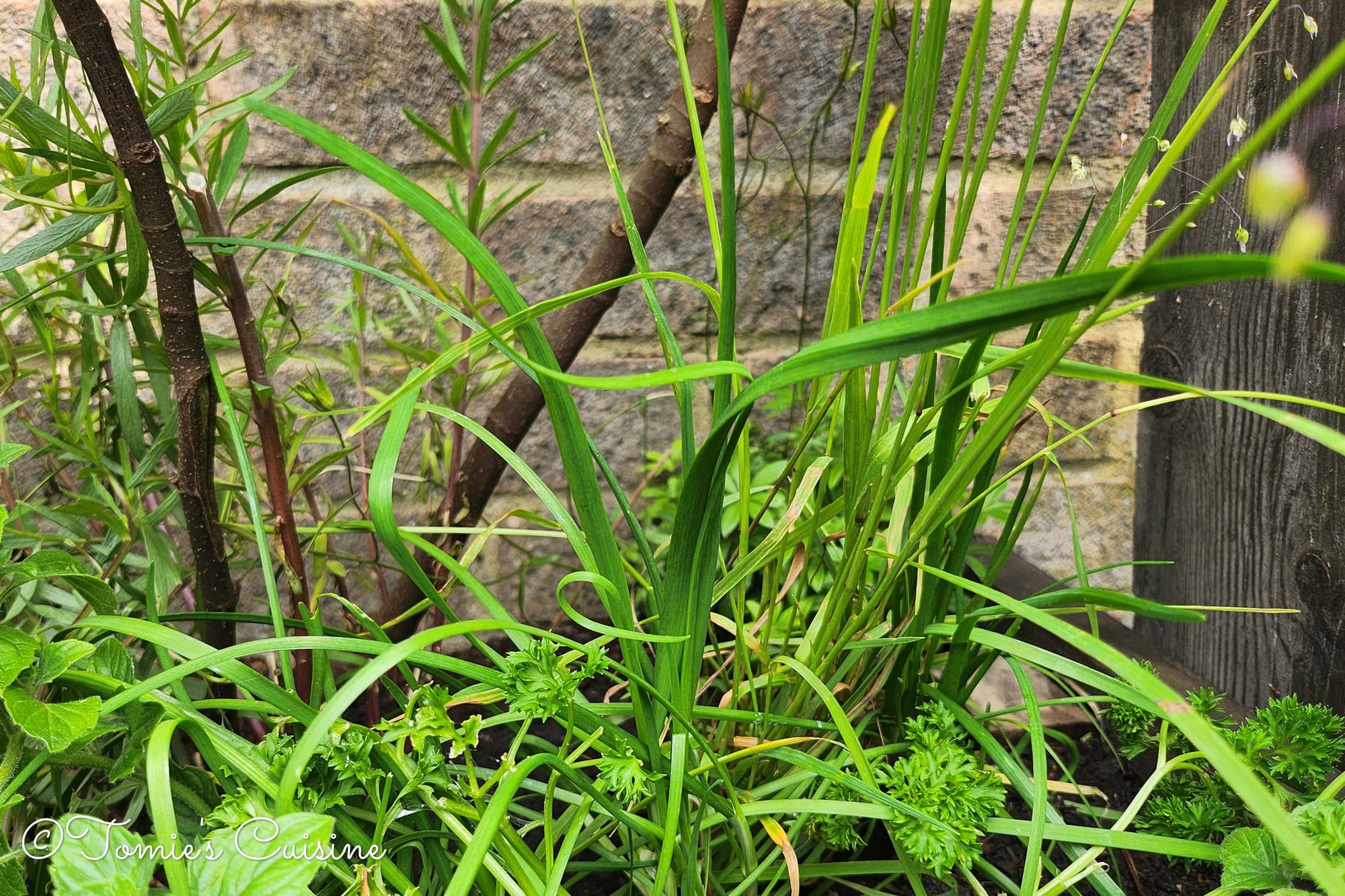
Garlic chive is an essential ingredient to make gyoza (pan-fried dumplings). So, get a bunch of garlic chives, chop them and add them to the filling mixture. It makes gyoza even tastier!
I also love making Korean savoury vegetable pancakes (yachaejeon) with it too. Both are served with vinegar, soy sauce and a little bit of chilli oil.
Dill
Dill is a herb often used in seafood dishes because of its fresh and citrusy taste. The first dish that I could think of was gravlax. It is a cured salmon dish from Nordic countries. I love having some dill in my smoked salmon and cream cheese bagel, too. It gives a more refreshing taste.
Fennel
Pickled, thinly sliced fennel is a great companion to fatty fish dishes like salmon and mackerel to cut the fattiness. You can also try to make some fermented fennel, like when we do sauerkraut. The seed is also beneficial in various cooking. E.g., topping for the homemade cheese cracker or sausage rolls.
Oregano
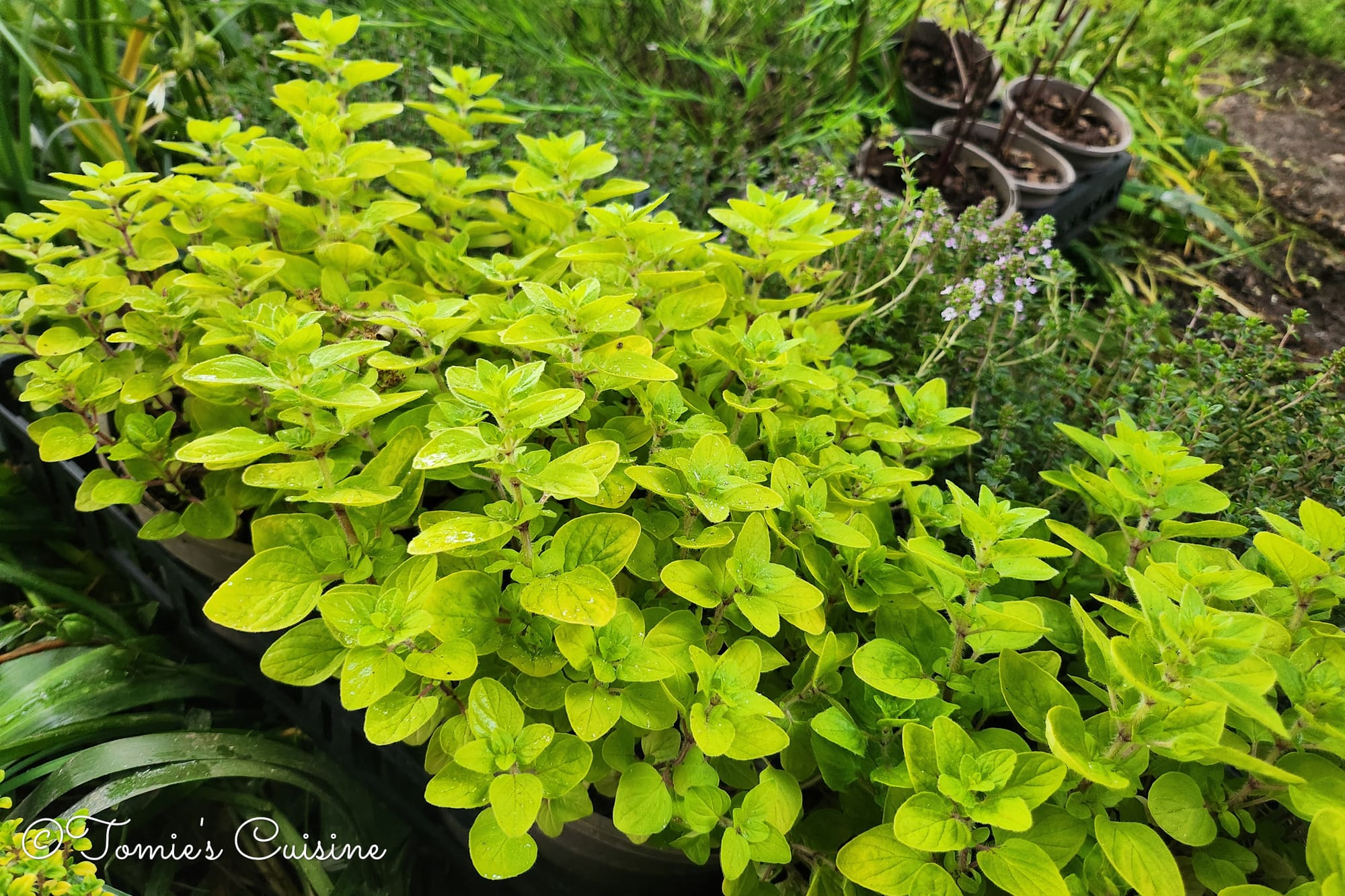
Oregano is often used in Italian or Mexican cuisine. I recently learnt how to make chimichurri (Latin American uncooked sauce), and oregano is essential to add flavour. This fresh green sauce goes well with steaks, fish, or bean salad.
In the Nobonsai garden, we planted the oregano called “Origanum vulgare ‘Aureum’”. It is also known as “Golden Marjoram”. We can add it to salad or on pizza before serving.
Wild rocket
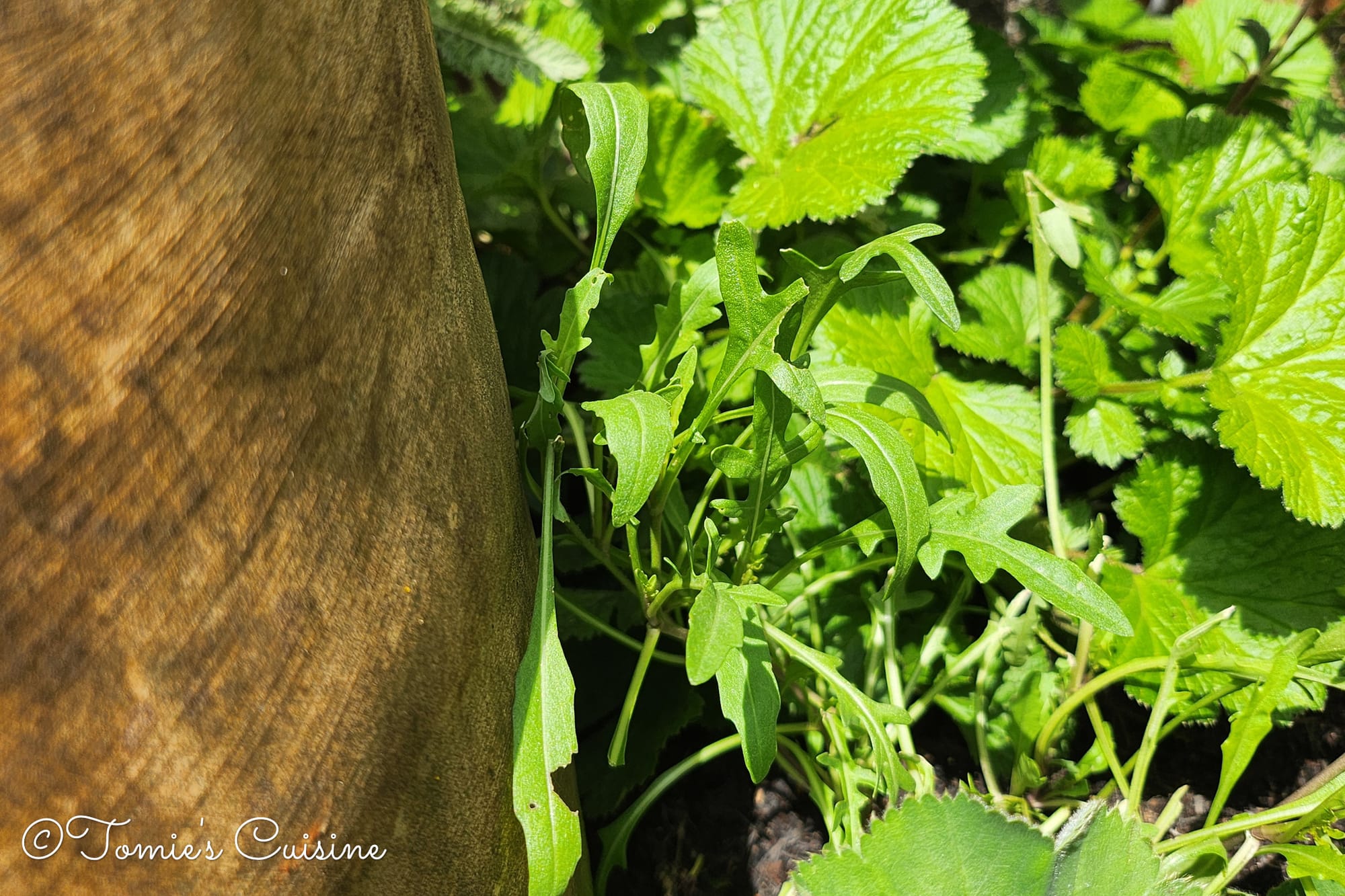
I love the peppery taste of wild rocket with my sandwich. I got this idea from a sandwich I bought at a local bakery, and they put some wild rocket with cucumber and tuna mayo into a sliced baguette. It’s as tasty as it is simple!
We also love putting some on our pizzas, along with some prosciutto and a drizzle of olive oil or spicy oil.
Mint
I think mint may be one of the most valuable herbs here in the UK. For example, mint sauce for lamb dish, fresh mint in Pimms cocktail and pea and mint soup (which I haven't tried yet).
I like to chop them and sprinkle them over the watermelon and feta salad to have them on a hot day. I also love having some fresh mint tea in a heatproof glass mug.
Horseradish
Horseradish is often used as a condiment in beef dishes like horseradish sauce. It's similar to Japanese wasabi, and when you get powdered wasabi, most of them are made from horseradish.
The leaf is also edible. I haven’t tried the horseradish leaf yet, but I wonder if it tastes similar to the wasabi leaf.
French Tarragon
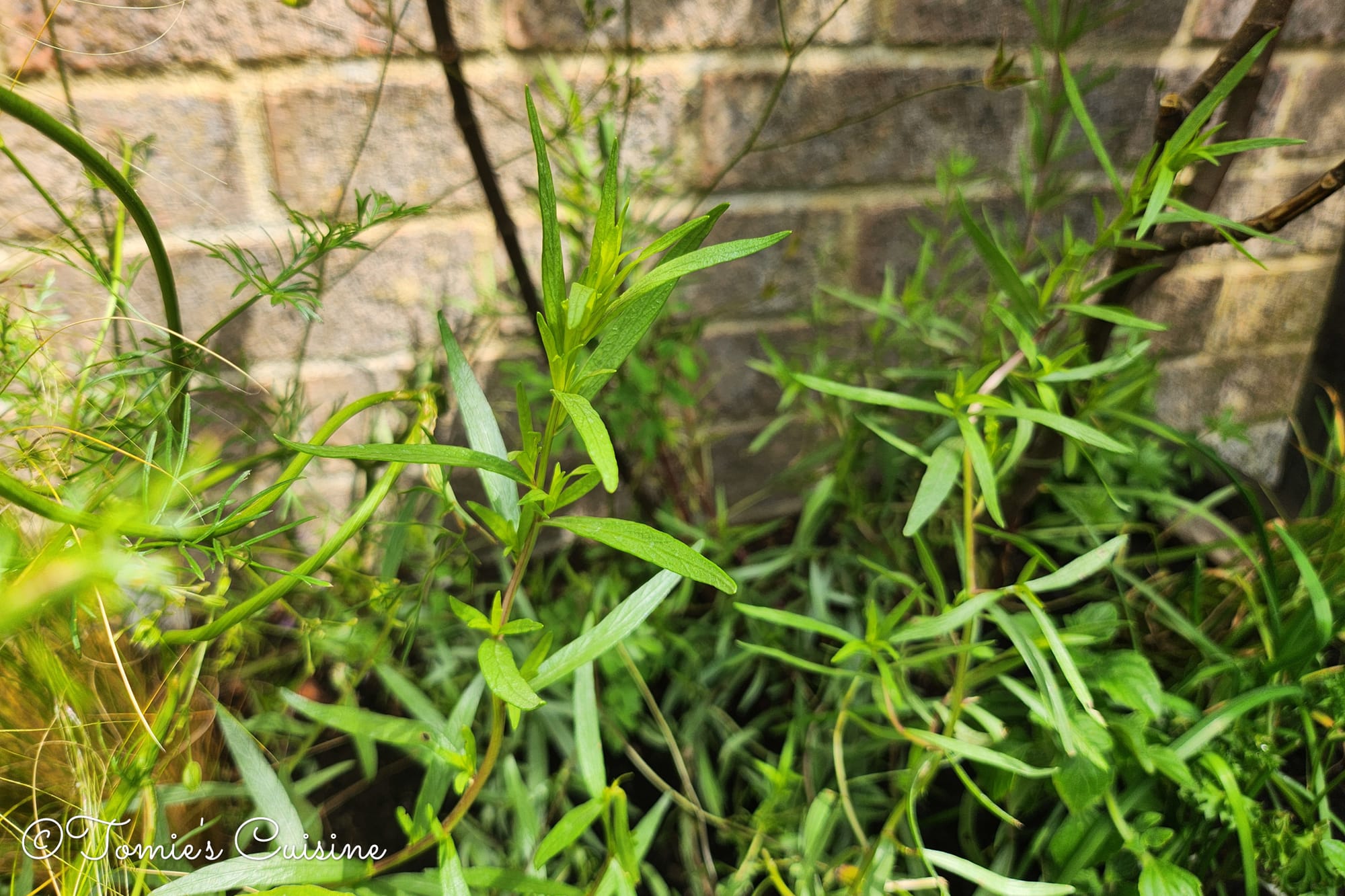
French tarragon is often used in chicken or fish dishes. I used to make creamy tarragon sauce when cooking chicken breast. It’s creamy, but tarragon gives some freshness to it.
Too much to consume?
Dehydrate them
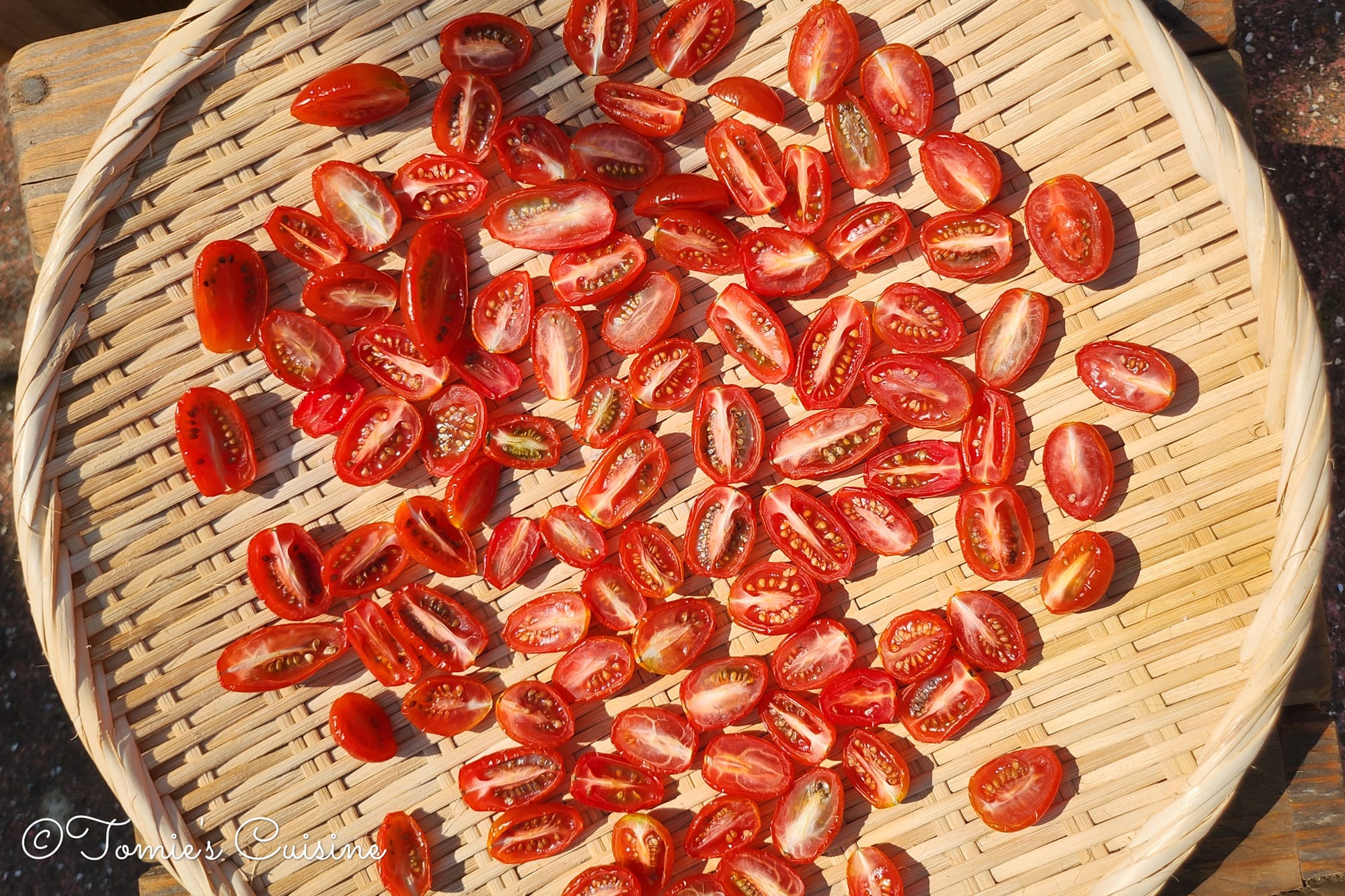
When we had a lot of fresh thyme to use, my mum made a few small bunches and hung them on the wall. You can hang them somewhere airy on sunny days, which is even better. Or, if you have a food dehydrator, you can make them dry faster this way. You won’t need to buy dried herbs from supermarkets anymore!
Make some drinks
Add some washed herbs such as mint or tarragon with other fruits into a bottle or a jug of water to infuse. And just like that, you'll have a refreshing summer drink! Or turn them into a syrup to enjoy it longer.
Infused oil
We haven’t done this yet, but once I pick some herbs, this will be the first thing to try!
Closing words
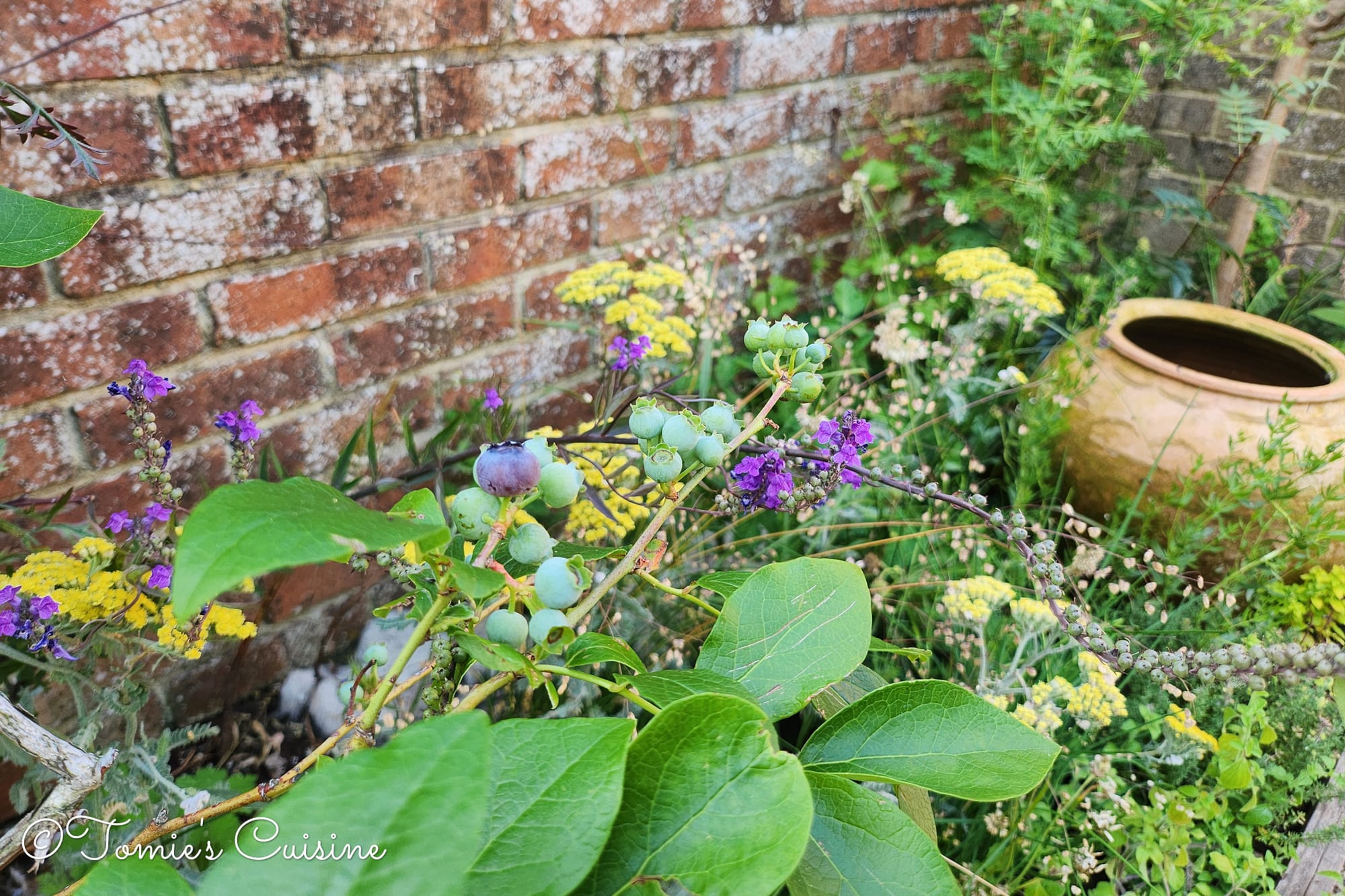
We couldn't write all the plants in the Nobonsai garden, so we might turn this into a small series of posts as we use them and get more ideas. But as a small preview, we also have some sage, raspberry, wild strawberry, Rumex, etc.
Now that we have completed the relocation of the Nobonsai garden to our private garden, we are looking forward to using all the edible plants in our kitchen and upcoming recipes!
We hope that you can get some inspiration from these examples and make a few recipes yourself. If you have any questions, leave a comment on Instagram or send us an email!
In the meantime, follow us on our Instagram, Pinterest, and Facebook pages. Don’t forget to subscribe to our newsletter so you don’t miss our future blog posts about other recipes and eco-friendly tips.

